Street Car Named Desire Symbols: White Clothing!
In Tennessee Williams’ iconic play “A Streetcar Named Desire,” symbolism is intricately used to enhance the narrative with profound meanings.
Key symbols such as Blanche’s white clothing, the streetcar itself, the paper lantern, and recurring music motifs are not mere props or background elements; they are essential to understanding the complex interplay between desire, illusion, and harsh reality as experienced by the characters.
These symbols enrich the audience’s interpretation of the play, shedding light on the psychological depth and emotional struggles of the characters.
Symbolism in “A Streetcar Named Desire” serves to:
- Represent characters’ traits and evolution, such as Blanche’s innocence and later loss of purity signified by her white clothing.
- Embody the themes of the play, with the streetcar symbolizing the relentless nature of desire.
- Illustrate the conflict between reality and illusion, as seen with the paper lantern covering the harsh light, much like Blanche’s attempts to mask the truth.
- Provide a sensory experience that aligns with character emotions, with music often reflecting the internal state of the characters.
Examples of symbolism include:
- Blanche’s White Clothing: Suggests purity and masks her sordid past.
- The Streetcar: Named “Desire,” it metaphorically represents the journey of life driven by desire.
- Paper Lantern: Used to soften the harshness of reality, representing Blanche’s own delusions.
- Music: The “Varsouviana Polka” that only Blanche hears symbolizes her mental decline and guilt.
Dive into the rich tapestry of “A Streetcar Named Desire” where symbols unlock the hidden depths of Williams’ characters.
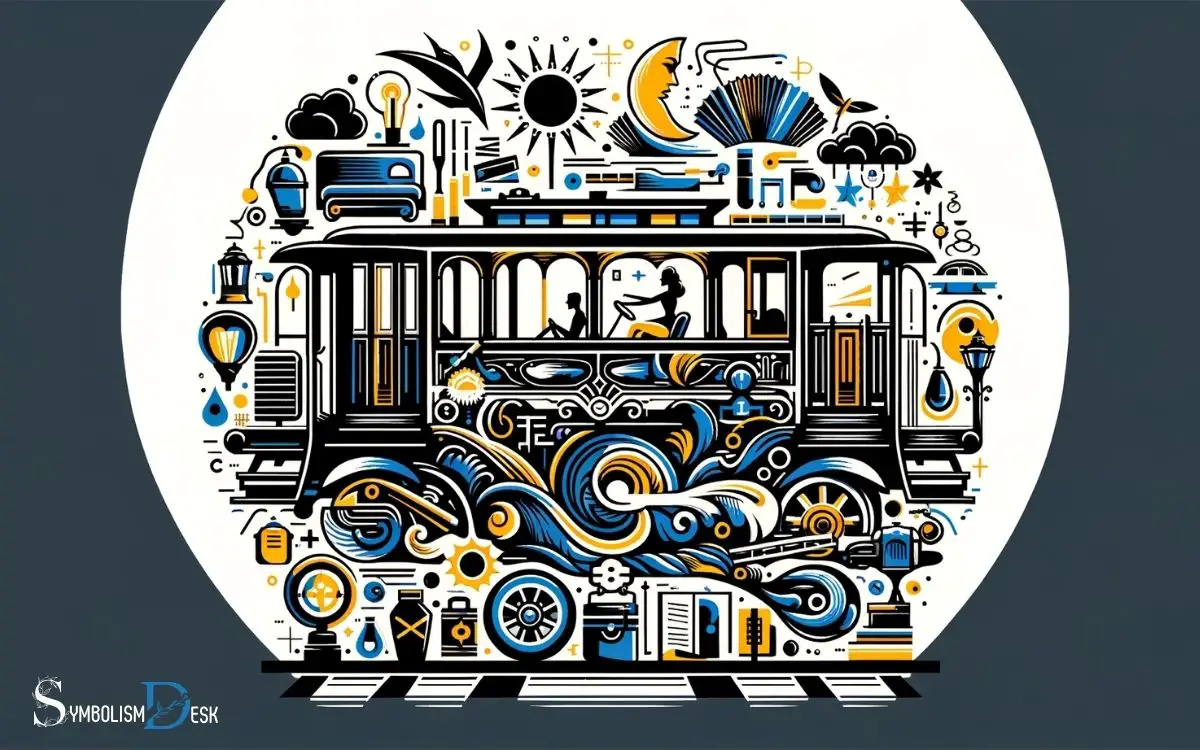
Key Takeaway
Symbolism of Blanche’s White Clothing
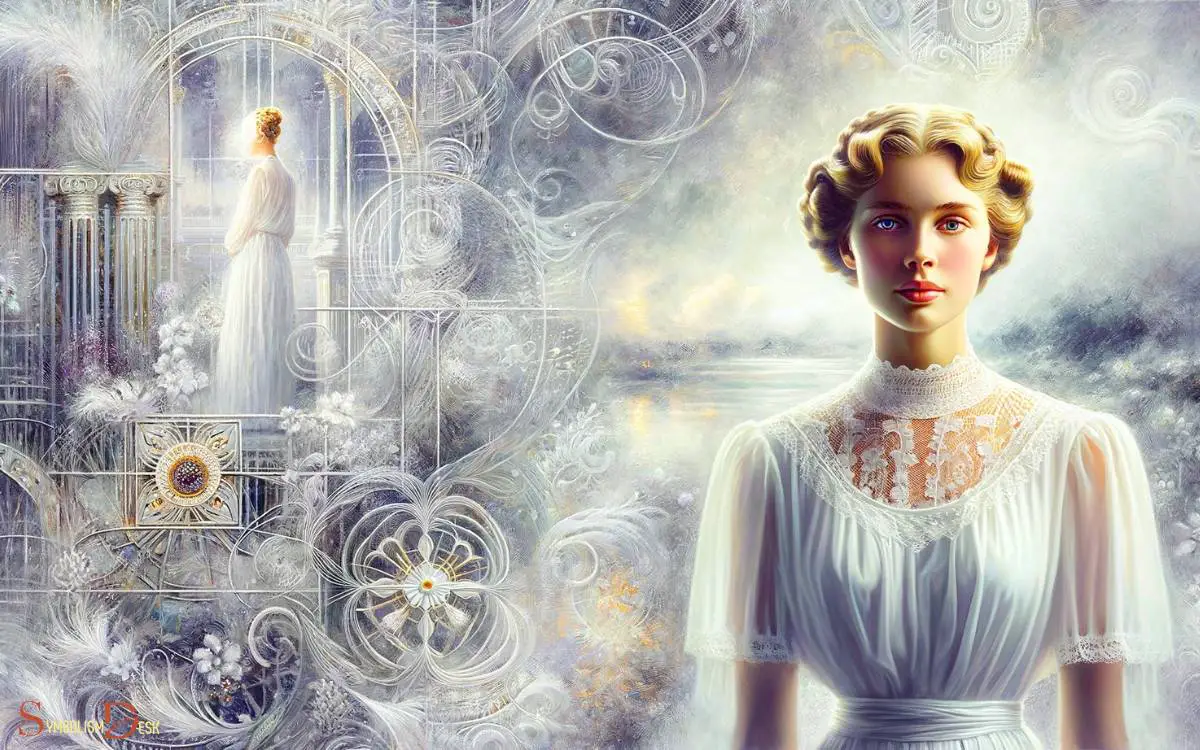
The white clothing worn by Blanche in ‘A Streetcar Named Desire’ symbolizes her desire to appear pure and innocent despite her troubled past.
Throughout the play, Blanche often presents herself as refined and virtuous, using her white attire as a facade to conceal the darker aspects of her history.
This deliberate choice of clothing serves as a form of self-protection, allowing her to maintain a sense of dignity and respectability in the face of her inner turmoil.
However, the contrast between her pristine clothing and the harsh realities she faces ultimately highlights the disparity between appearance and truth.
Blanche’s white wardrobe not only reflects her yearning for purity but also underscores the complexities of her character, inviting the audience to delve deeper into the layers of her persona.
Significance of the Streetcar
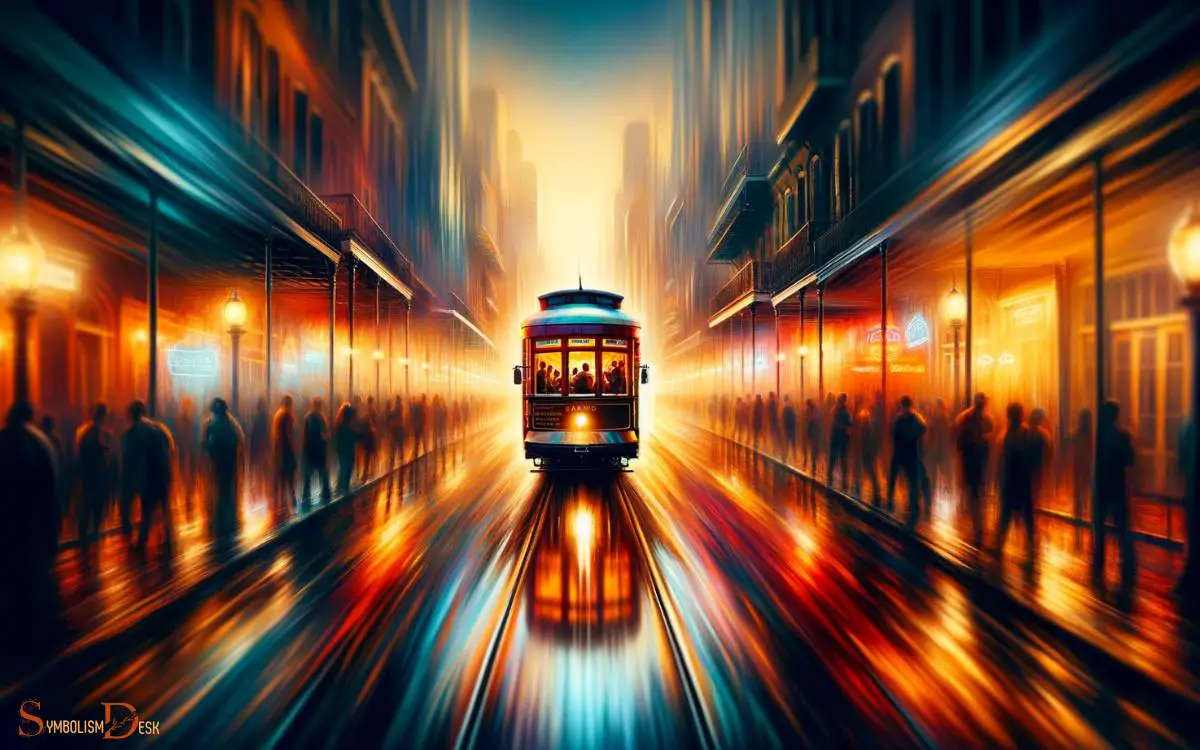
Symbolizing the inexorable pull of desire and temptation, the streetcar in ‘A Streetcar Named Desire’ propels the characters towards their fates with a relentless force.
The streetcar, named “Desire,” serves as a powerful symbol of the characters’ inner conflicts and the societal forces that shape their lives.
It represents the allure of passion and pleasure, drawing the characters into a world of illusion and ultimately leading to their downfall.
Blanche’s haunting declaration, “They told me to take a streetcar named Desire, and then transfer to one called Cemeteries and ride six blocks and get off at Elysian Fields,” underscores the inescapable journey towards destruction.
The streetcar also reflects the rapid industrialization and urbanization of post-war America, highlighting the loss of tradition and the disintegration of old values.
Ultimately, the streetcar embodies the inescapable and destructive nature of desire in the characters’ lives.
The Paper Lantern as a Symbol

The paper lantern in ‘A Streetcar Named Desire’ serves as a multifaceted symbol within the play. Firstly, it functions as a source of light, illuminating the characters’ surroundings and exposing their true selves.
Secondly, the lantern represents the illusion of happiness and stability, as it can be easily extinguished or torn apart.
Lastly, the fragility of the paper lantern mirrors the delicate nature of the characters’ relationships and emotional states, adding depth to its symbolic significance throughout the narrative.
Lantern as Light Source
Paper lanterns in ‘Streetcar Named Desire’ serve as a crucial light source, illuminating the characters’ inner turmoil and desires. The paper lantern, a delicate and ephemeral source of light, symbolizes the characters’ fragile hopes and desires.
As the lanterns flicker and sway, so do the emotions and motivations of the characters. The soft, diffused light from the lanterns creates a dreamlike atmosphere, hinting at the characters’ illusions and fantasies.
At the same time, the lantern’s fragility mirrors the vulnerability of the characters, particularly Blanche, whose facade of sophistication and poise is easily shattered.
The paper lanterns not only provide physical illumination but also serve as a metaphor for the characters’ inner struggles and the fleeting nature of their desires, adding depth and symbolism to the play.
Lantern as Illusion
Swaying gently in the dimly lit rooms, the delicate paper lanterns in ‘Streetcar Named Desire’ evoke a sense of illusion and mirage, reflecting the characters’ own fragile hopes and dreams.
The paper lanterns symbolize:
- Deceptive appearances: Just as the lanterns create a soft, romantic glow that masks the harsh reality of the characters’ lives, the characters themselves often project illusions to hide their true feelings and situations.
- Transient nature of happiness: The flickering light of the lanterns mirrors the fleeting moments of joy and contentment experienced by the characters, emphasizing the ephemeral nature of their happiness.
- Desire for escapism: The soft, diffused light of the lanterns represents the characters’ yearning for an idealized, dreamlike existence, away from the harshness of their current reality.
The paper lanterns in the play thus serve as a poignant metaphor for the characters’ illusions and yearnings. This illusion of hope and aspirations seamlessly transitions into the subsequent section about ‘lantern as fragility’.
Lantern as Fragility
Evoking a sense of vulnerability and delicacy, the paper lantern in ‘A Streetcar Named Desire’ symbolizes the characters’ fragility and fleeting illusions.
The lantern, a prominent symbol throughout the play, represents the characters’ desperate attempts to hold onto their diminishing hopes and dreams. Just as a paper lantern is easily torn and destroyed, the characters’ illusions and fragile façades are similarly fragile and transient.
Blanche’s delicate hold on her fabricated reality and Stella’s fragile emotional state are encapsulated in the symbolism of the lantern.
The flickering light within the lantern also mirrors the characters’ wavering grasp on their fantasies, highlighting the ephemeral nature of their illusions.
Ultimately, the paper lantern serves as a poignant reminder of the characters’ fragility and the precariousness of their constructed realities.
The Music and Its Symbolic Meaning
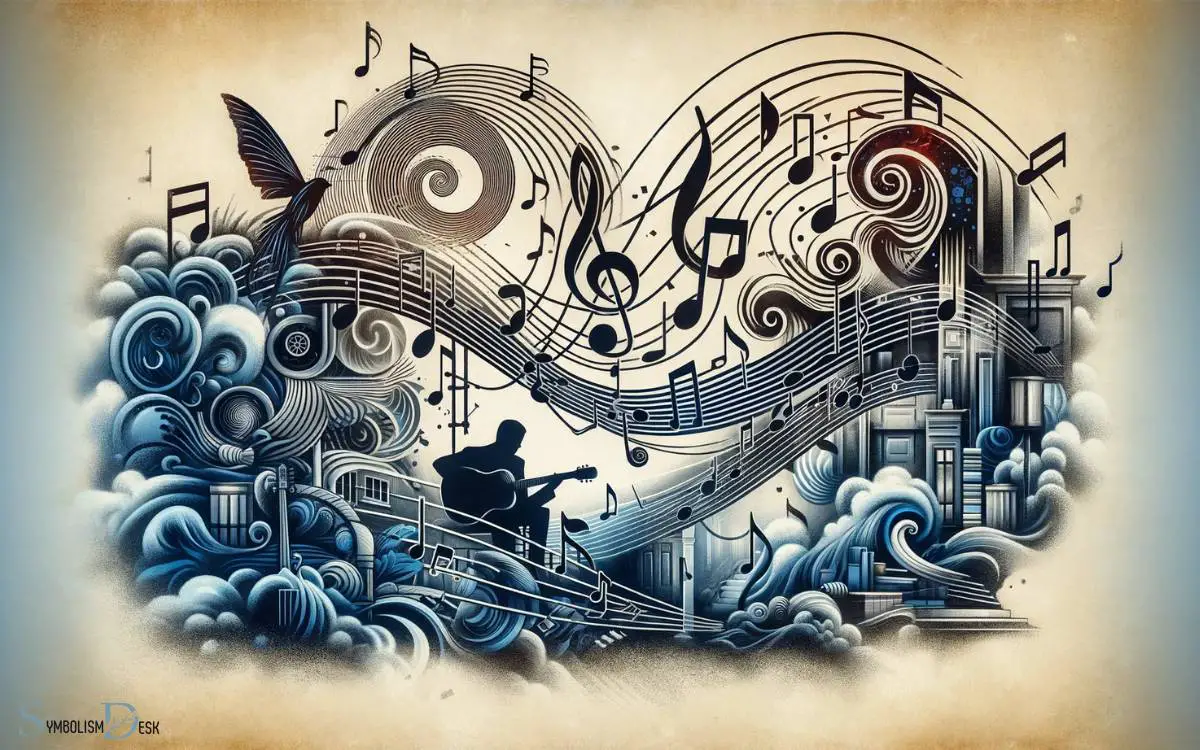
The music in ‘A Streetcar Named Desire’ serves as a conduit for expressing the characters’ emotions and inner turmoil. This musical element carries symbolic meaning throughout the play, adding depth and nuance to the narrative.
Here’s how the music functions symbolically:
- Emotional Intensity: The music reflects the characters’ emotional states, mirroring their psychological struggles and desires.
- Symbol of Escapism: The choice of music and how it is used becomes a symbol of escapism for the characters, offering a temporary respite from their harsh realities.
- Foreshadowing and Tension: The music often foreshadows key events and creates tension, heightening the dramatic impact of the story.
The use of music in ‘A Streetcar Named Desire’ goes beyond mere entertainment, serving as a powerful symbolic tool that enriches the audience’s understanding of the characters and their experiences. This sets the stage for an exploration of the polka music as a symbol of desire.
The Polka Music as a Symbol of Desire
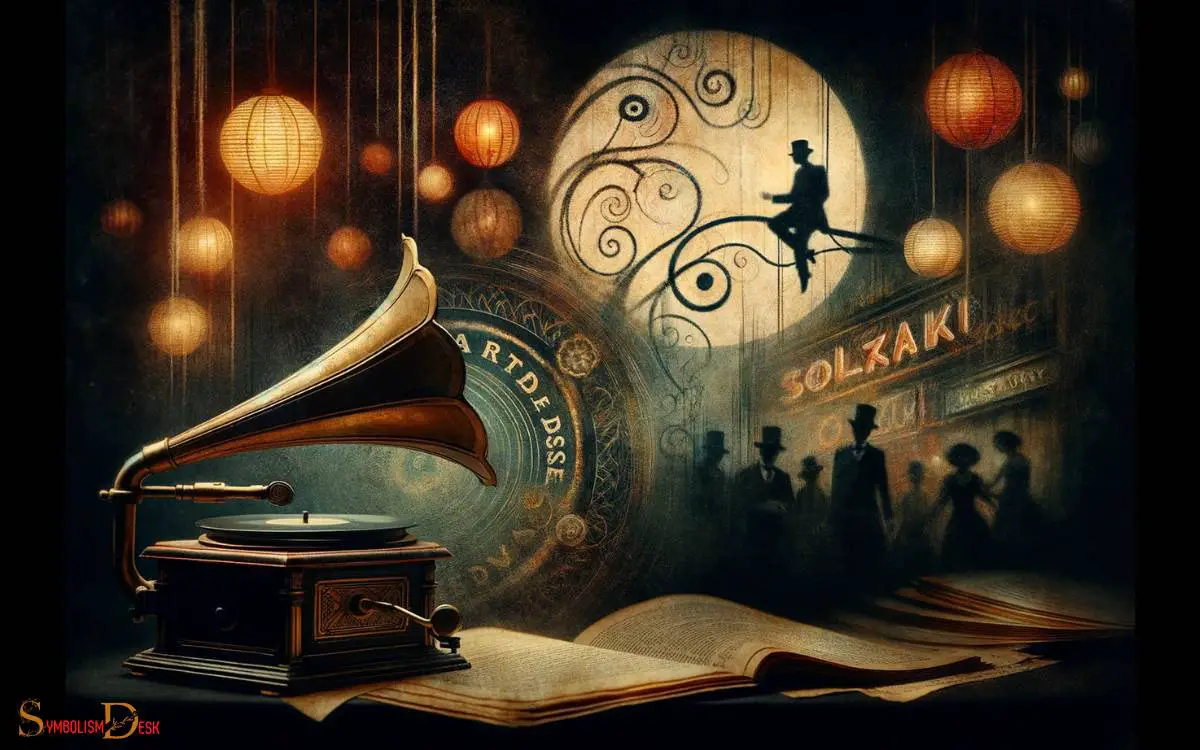
The haunting strains of polka music in “A Streetcar Named Desire” serve as a powerful symbol of yearning and desire. The music, often associated with Blanche, reflects her longing for a life that is now out of reach.
Through the polka music, Williams skillfully conveys the characters’ unfulfilled desires and the poignant nostalgia that pervades the play.
Polka Music Represents Yearning
Polka music in ‘A Streetcar Named Desire’ symbolizes yearning. The lively, upbeat rhythm of the polka music serves as a poignant symbol of the characters’ desires and aspirations. In the play, the polka music is used to underscore the longing for a better life, love, and happiness.
Through the use of polka music, the playwright conveys the characters’ innermost yearnings and the relentless pursuit of their desires.
Polka Music as a Symbol of Yearning:
- Desire for Love: The polka music represents the characters’ yearning for love and affection, especially Blanche’s longing for meaningful connections.
- Yearning for Happiness: The energetic and joyful nature of polka music mirrors the characters’ yearning for happiness and fulfillment in their lives.
- Longing for Escape: The lively tempo of the polka music also symbolizes the characters’ yearning to escape their harsh realities and find solace in their dreams and desires.
Symbolizes Blanche’s Longing
Symbolizing Blanche’s longing for love, the polka music in ‘A Streetcar Named Desire’ serves as a poignant representation of her yearning for meaningful connections and affection. Throughout the play, the polka music is associated with Blanche’s memories of her late husband.
The lively and spirited nature of the polka music reflects Blanche’s desire for passion, joy, and love. It becomes a symbol of her longing for the vibrant and affectionate relationship she once had, a stark contrast to the troubled and painful relationships she experiences in the present.
The polka music serves as a constant reminder of her unfulfilled yearning for genuine love, adding depth to her character and highlighting the emotional complexities she grapples with.
This longing is a central theme in Blanche’s narrative, shaping her interactions and motivations as the story unfolds.
Signifies Unfulfilled Desires
Blanche’s longing for love and affection is further emphasized by the polka music, serving as a symbol of her unfulfilled desires in ‘A Streetcar Named Desire’.
- Emotional Turmoil: The polka music underscores Blanche’s inner turmoil and yearning for happiness, highlighting the stark contrast between her idealized romantic fantasies and the harsh reality she faces.
- Escapism and Illusion: The lively and nostalgic polka music represents Blanche’s attempts to escape from her troubled past and present circumstances, seeking solace in illusions and memories of happier times.
- Desperate Craving for Connection: The polka music symbolizes Blanche’s desperate craving for genuine human connection and intimacy, as she grapples with the emptiness and isolation that haunt her existence.
This symbol powerfully conveys the depth of her unfulfilled desires and the haunting echoes of her unresolved longing.
The Varsouviana Polka as a Symbol of Trauma
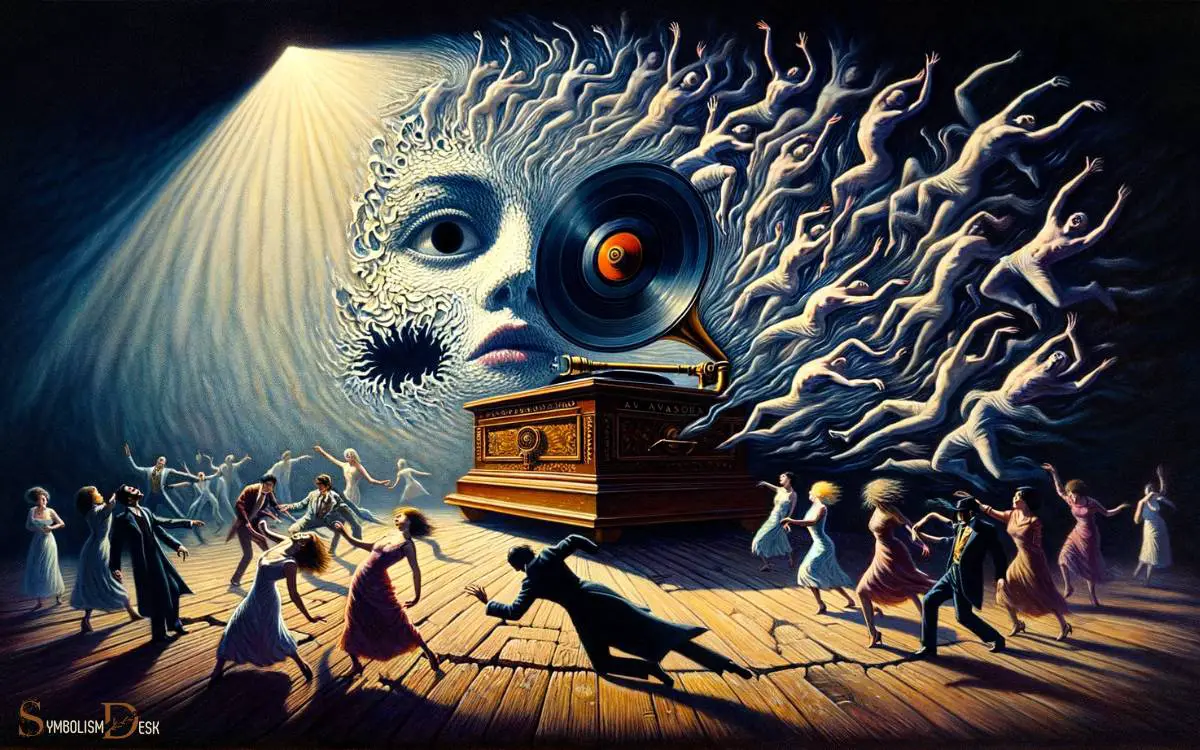
As Blanche Dubois experiences moments of distress and agitation, the Varsouviana Polka resurfaces in her mind, evoking memories of the traumatic events that have shaped her past.
This haunting tune symbolizes the pivotal moment of her life when she discovered her husband’s homosexuality and the subsequent suicide.
The polka represents the irrevocable loss of innocence and the shattering of her dreams, leaving an indelible mark on her psyche. Its recurring presence reflects Blanche’s inability to escape the past, as the trauma continues to manifest in her present reality.
The dissonance and discordance of the music parallel the disintegration of her mental state, serving as a constant reminder of the anguish she carries within.
Through the Varsouviana Polka, Tennessee Williams masterfully conveys the enduring impact of trauma on an individual’s consciousness.
The Symbolism of Light and Darkness
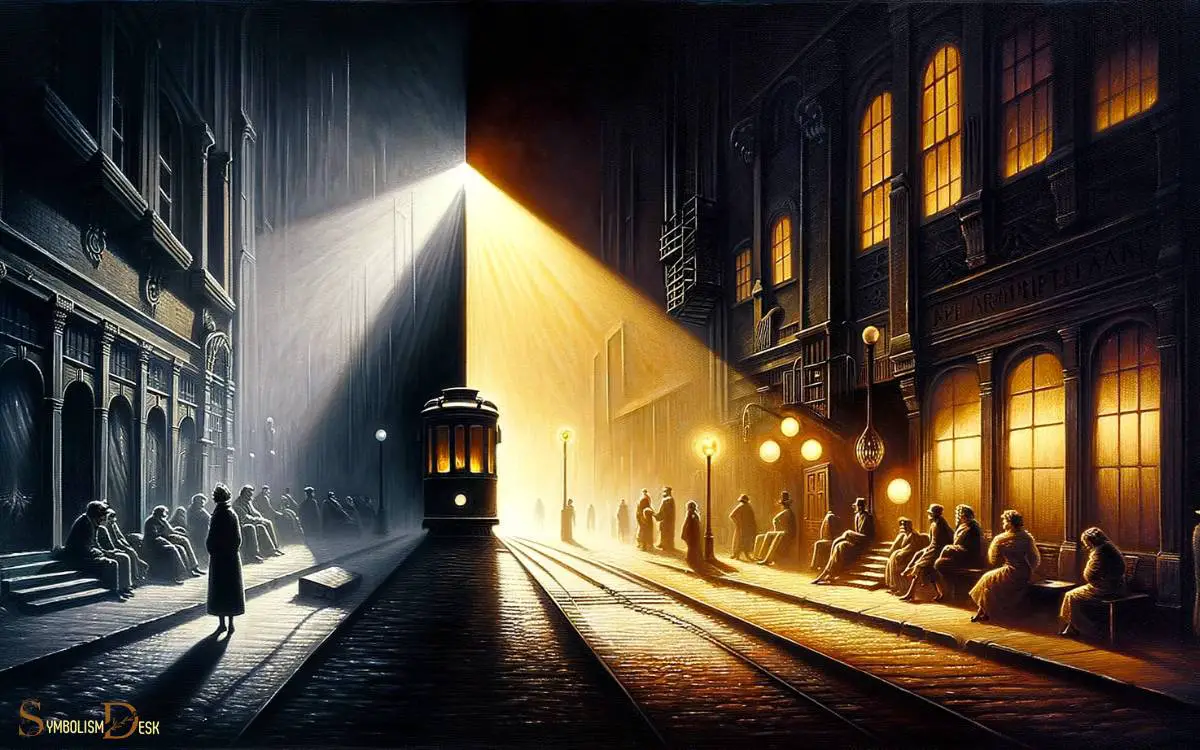
The play ‘A Streetcar Named Desire’ employs light and darkness to convey the characters’ emotional states and the underlying themes.
Light and Darkness in the play symbolize:
Reality vs. Illusion: The interplay of light and darkness reflects the characters’ struggle between truth and deception.
Blanche DuBois often seeks refuge in dimly lit spaces, trying to hide from the harsh light of reality, while Stanley Kowalski represents the raw, unfiltered truth, often found in well-lit areas.
Psychological States: The use of light and darkness mirrors the characters’ mental and emotional turmoil. The contrast between light and shadow underscores the psychological tension and instability experienced by Blanche, as well as the aggression and dominance of Stanley.
Symbolism of Desires: Light is used to represent desire, hope, and dreams, while darkness signifies loss, despair, and the harshness of reality. This duality emphasizes the characters’ conflicting aspirations and the crushing weight of their unfulfilled desires.
Conclusion
In A Streetcar Named Desire, the symbols of Blanche’s white clothing, the streetcar, the paper lantern, and the music all serve as powerful metaphors for the characters’ desires, traumas, and inner turmoil.
The use of light and darkness further emphasizes the struggle between reality and illusion. These symbols invite the audience to delve deeper into the complexities of the human experience, shedding light on the inner struggles and desires that drive the characters’ actions.






